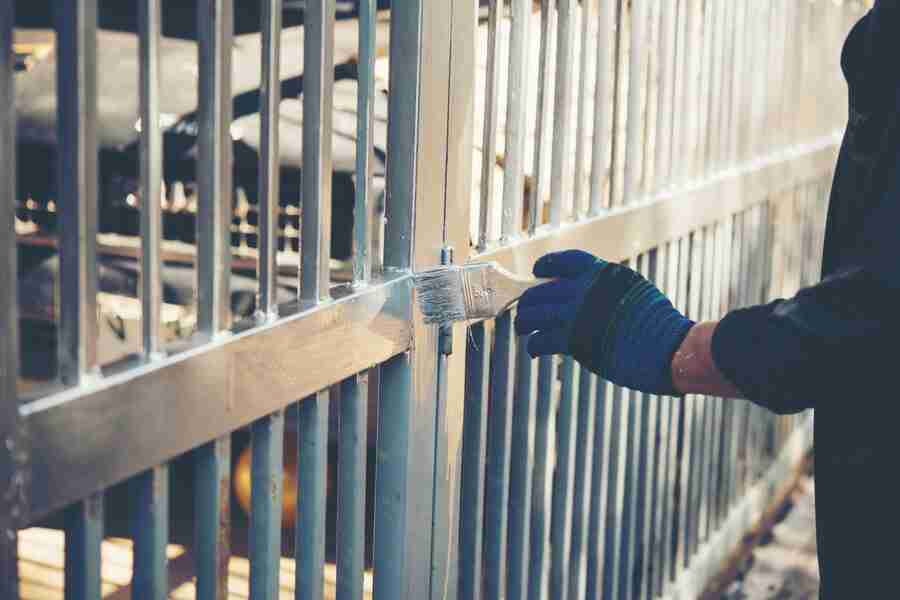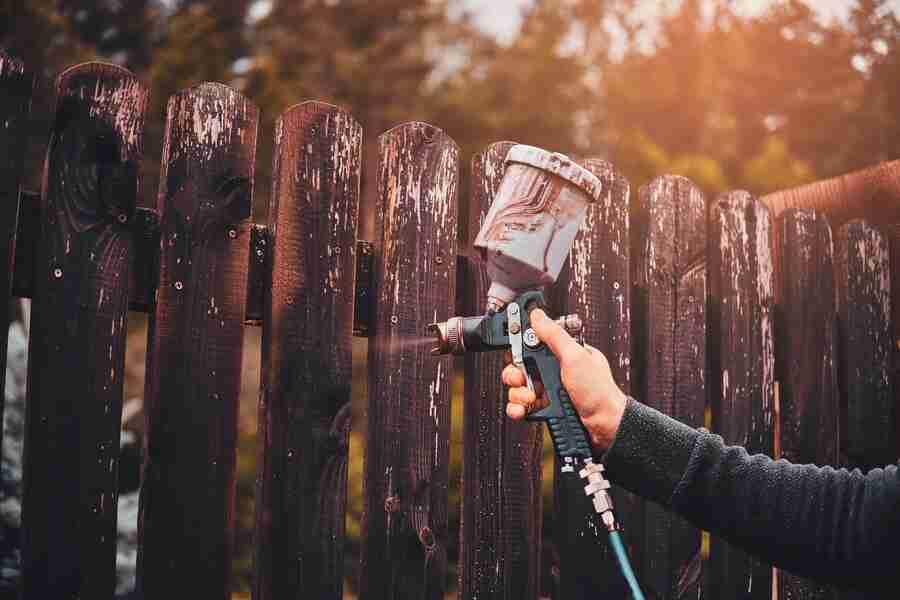
Welcome to our blog where we delve into the world of fence stain and paint, exploring the seamless fusion of aesthetics and protection. Often overlooked, fences play a pivotal role in shaping the exterior appeal of our homes while acting as the first line of defense against the elements. In this comprehensive guide, we unravel the secrets behind achieving a stunning fence that not only enhances the visual charm of your property but also fortifies the wood, ensuring longevity.
The choice of fence stain and paint extends beyond mere color preferences; it involves a careful consideration of the environmental conditions, architectural harmony, and the overall vibe you want to create in your outdoor space. From choosing the right hues that complement your home’s exterior to exploring creative finishes that elevate curb appeal, we will navigate the aesthetic spectrum to inspire your next outdoor project.
Beyond the surface, we’ll delve into the protective aspects of fence maintenance. Wood, being a natural material, is susceptible to weathering, decay, and unwanted guests like mold and mildew. Discover how the right stain or paint can act as a shield against UV rays, rain, and other environmental factors, ensuring your fence stands the test of time.
Whether you’re a seasoned DIY enthusiast or considering professional assistance, we provide insights, tips, and case studies to guide you through the process. Join us on this journey as we uncover the art and science of fence stain and paint, empowering you to transform your outdoor space into a harmonious blend of beauty and resilience.
The Aesthetics Of Fence Stain And Paint
The aesthetics of fence stain and paint play a pivotal role in shaping the overall visual appeal of a property. Choosing the right colors for your fence is more than just a matter of personal preference; it involves a thoughtful consideration of the surrounding environment and the architecture of your home. Harmonizing with the landscape is crucial, as the fence should complement the natural elements, such as trees, plants, and the overall color palette of your outdoor space.
Matching the exterior of your home is another key aspect of the aesthetic decision-making process. Coordinating the fence color with the exterior of your house creates a cohesive and unified look, enhancing the curb appeal. This synchronization is particularly important if the fence is a prominent feature of the property, contributing to a harmonious and well-designed exterior.
Beyond choosing suitable colors, the application of creative finishes can elevate the aesthetics of a fence. Distressed and weathered looks are popular for those seeking a rustic charm, while custom designs and patterns provide an opportunity for homeowners to express their individuality. Whether it’s a classic solid color or a more intricate design, the aesthetics of fence stain and paint allow homeowners to make a statement about their style and contribute to the overall beauty of their outdoor space. Ultimately, a well-chosen and properly applied fence stain or paint can transform a simple enclosure into an aesthetically pleasing and inviting part of your property.
The Protective Role Of Fence Stain And Paint
A. Preserving the Wood Against Weather Elements
Wooden fences are constantly exposed to various weather elements that can take a toll on their structural integrity. Fence stain and paint act as a protective barrier against these elements, extending the lifespan of the wood and maintaining the fence’s structural stability.
- UV Rays, Rain, and Snow:
- UV Protection: Sunlight, especially UV rays, can lead to the fading and discoloration of wood over time. Fence stain and paint with UV-resistant properties shield the wood from the harmful effects of prolonged sun exposure.
- Water Resistance: Rain and snow can penetrate the wood fibers, causing it to swell, warp, or rot. A quality stain or paint creates a waterproof seal that prevents water absorption, reducing the risk of these issues.
- Preventing Rot and Decay:
- Mold and Mildew Resistance: Moisture is a breeding ground for mold and mildew, leading to decay. Fence stain and paint often contain fungicides that inhibit the growth of these microorganisms, protecting the wood from deterioration.
- Rot Prevention: Stagnant water, a common result of rain or snow absorption, can accelerate wood decay. Stains and paints create a barrier that minimizes water infiltration, reducing the likelihood of rot.
B. Inhibiting Mold and Mildew Growth
- Importance of Moisture Resistance:
- Wood Moisture Content: Wood with high moisture content is susceptible to mold and mildew growth. Stain and paint create a protective layer, reducing the wood’s exposure to moisture and thus preventing the conditions favorable for fungal growth.
- Long-Term Structural Integrity: Continuous exposure to mold and mildew can compromise the structural integrity of the fence. Fence coatings play a crucial role in maintaining the dryness of the wood, preventing the onset of these issues.
- Health Considerations for Homeowners:
- Allergen Reduction: Mold spores and mildew can trigger allergies and respiratory issues. By preventing the growth of these allergens on the fence, stain and paint contribute to a healthier outdoor environment for homeowners and their families.
- Avoiding Wood Decay: Mold and mildew growth often accompany wood decay. Stain and paint not only enhance the aesthetic appeal but also ensure that the fence remains a sturdy and safe structure for an extended period.
In summary, the protective role of fence stain and paint goes beyond aesthetics, forming a critical defense against the damaging effects of weather elements. By preserving the wood, inhibiting mold and mildew growth, and preventing rot, these coatings contribute significantly to the long-term durability and functionality of your fence.
Types Of Fence Stain And Paint
I. Water-Based vs. Oil-Based Options:
A. Water-Based:
- 1. Quick drying time
- 2. Low VOC (Volatile Organic Compounds) content
- 3. Easy cleanup with soap and water
- 4. Ideal for light-duty applications
B. Oil-Based:
- 1. Long-lasting and durable
- 2. Provides deep penetration into the wood
- 3. Requires mineral spirits for cleanup
- 4. Well-suited for high-traffic areas and harsh weather conditions
II. Transparent, Semi-Transparent, and Solid Stains:
A. Transparent Stains:
- 1. Reveals the natural wood grain
- 2. Light tint for subtle enhancement
- 3. Limited UV protection
- 4. Ideal for showcasing high-quality wood
B. Semi-Transparent Stains:
- 1. Offers a blend of color and wood visibility
- 2. Provides moderate UV protection
- 3. Adds a hint of color without hiding the grain
- 4. Popular for enhancing the appearance of older wood
C. Solid Stains:
- 1. Opaque finish, covering the wood entirely
- 2. High UV protection and durability
- 3. Hides imperfections and aging in the wood
- 4. Versatile color options for a bold statement
Each type of stain and paint has its unique characteristics, and the choice depends on factors such as the desired aesthetic, level of wood visibility, and the amount of protection needed against environmental elements.

Maintenance Tips For Longevity
A. Regular Inspections
- Conduct routine visual inspections to identify any signs of wear or damage.
- Pay attention to areas prone to water exposure, such as the bottom of the fence or areas close to the ground.
B. Prompt Repairs
- Address any issues, such as loose boards, splinters, or peeling paint, as soon as they are identified.
- Repairing minor damages promptly prevents them from escalating into more significant problems.
C. Cleaning
- Regularly clean the fence surface to remove dirt, dust, and debris that can contribute to deterioration.
- Use a mild detergent or specialized fence cleaner along with a soft brush or pressure washer for effective cleaning.
D. Reapplication of Stain or Paint
- Follow the manufacturer’s guidelines for reapplication intervals.
- Consider recoating the fence every 2-3 years, or more frequently in harsh weather conditions.
E. Sanding and Smoothing
- Sand rough or uneven surfaces to maintain a smooth and attractive appearance.
- Focus on areas where the stain or paint may have worn unevenly or where wood grain has become pronounced.
F. Sealing Exposed Ends
- Pay attention to the exposed ends of wood pieces, as these are vulnerable to moisture absorption.
- Apply an additional coat of stain or paint to the exposed ends to enhance protection against the elements.
G. Pest Control
- Regularly inspect for signs of insect infestations, such as termites or carpenter ants.
- Use appropriate insecticides or seek professional pest control services to prevent wood damage.
H. Protection Against Moisture
- Ensure proper drainage around the fence to prevent water pooling.
- Use a water repellent or moisture-sealing product to enhance the fence’s resistance to water damage.
I. Trim Vegetation
- Keep vegetation, such as vines or bushes, trimmed and away from the fence.
- Overgrown plants can trap moisture and contribute to the deterioration of the wood.
J. Winter Preparations
- Before winter, ensure the fence is adequately protected against freezing temperatures and moisture.
- Consider applying an extra layer of protection to shield the wood during harsh winter conditions.
Implementing these maintenance tips will not only extend the life of your fence but also contribute to its aesthetic appeal over the years. Regular care and attention will help you enjoy a durable and visually pleasing outdoor structure.
In conclusion, the journey of enhancing and preserving your outdoor space through fence stain and paint is a multifaceted endeavor that seamlessly blends aesthetics with protective functionality. As we’ve explored the intricacies of color selection, creative finishes, and the transformative power of these applications, it becomes clear that a well-maintained fence can significantly elevate the curb appeal of your property.
Moreover, the protective role of fence stain and paint should not be underestimated. These applications act as formidable guardians, shielding the wood against the relentless forces of nature – be it the scorching sun, relentless rain, or the onset of decay-inducing molds. The choices between water-based and oil-based solutions, transparent or solid stains, and the decision to undertake a DIY project or seek professional assistance all play vital roles in determining the longevity and effectiveness of your fence treatment.
As homeowners, dedicating time to regular inspections, prompt repairs, and a disciplined maintenance routine becomes crucial. From cleaning and reapplication schedules to addressing pest control and ensuring proper drainage, these efforts collectively contribute to the sustained beauty and structural integrity of your fence.
Ultimately, this investment in care and maintenance is not just about preserving a physical structure; it’s about creating a lasting, welcoming outdoor environment. A well-maintained fence is a testament to your commitment to both the visual harmony of your surroundings and the durability of your property. So, embrace the dual benefits of fence stain and paint, and let your outdoor space stand as a testament to the perfect union of aesthetics and protection.


